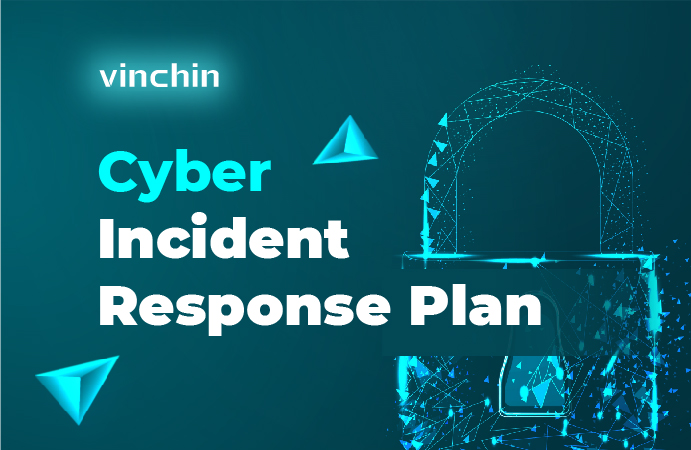-
What is Cyber Incident Response Plan?
-
Cyber Incident Response Plan Checklist
-
12 Cyber Security Incident Response Plan Templates and Examples
-
Combine with a Reliable Backup Solution
-
Wrap up

Cyber threats have found their way everywhere. 7666 ransomware attacks and 6011 cyber vulnerabilities are detected per second in the United States alone, based on the cyber statistics of Kaspersky, one of the largest privately owned cybersecurity companies globally, not to mention the various variants and other countries and areas. You can check the 10 anti-ransomware practices generally or the specific methods for VMware or XenServer.
Cyber security threats include malware, emotet, denial of service, man-in-the-middle, phishing, SQL injection, password attacks, and other strains. And how do they impact businesses worldwide?
The cost of cybercrime is predicted to increase significantly over the next five years, from $8.44 trillion in 2022 to $23.84 trillion in 2027, according to predictions from the Cybersecurity Outlook of an online statistics and reports platform Statista.
The bad situation entails the creation of an effective cyber incident response plan to deal with this on an emergency basis. This post aims to give users in need clear and consistent guidance on how to establish an IR plan.
What is Cyber Incident Response Plan?
A cyber security incident response (IR) plan is a set of written security guidelines and practices that prepare, detect, control, and restore data from data compromises, such as data breaches and leaks, or cyberattacks, to minimize economical and reputational damage.
This kind of proactive incident preparation plan matters since it standardizes and prioritizes the procedures for the peace of mind of everyone involved. It also exposes potential risks and maximizes the efficiency of data retrieval. For customers and clients, organizations with such a plan are preferred because they care about data security.
There are 6 phases of the IR plan:
Develop a system;
Detect cyber threats;
Contain risks;
Minimize attackers;
Restore lost data;
Adjust and learn.
Cyber Incident Response Plan Checklist
Preparation
1. Any current strategies and an enforcement team with clearly defined different duties now?
Identify threats
Contain risks
Update progress
Eradicate cyber threats
Communicate and cooperate with law enforcement
Announce the incident to customers and give instructions
Recover the corrupted, encrypted, or lost data
Bring systems to service
Generate learned lessons
2. Have you tested the security policies and trained the personnel regularly (weekly, monthly, or annually) so they know what exactly they should do?
3. Have you installed and updated antivirus, firewalls, and intrusion prevention devices?
4. Any guidance or procedures now?
5. Whether or not the team is equipped with the tools needed?
A log for incident responders
The contact information of IR team members, system owners, and technical responders on USB drives and an alternative means in order (online and offline)
A bootable CD or USB disc that contains all the necessary applications to fix file systems and remove threats (s)
A laptop or other tools for performing forensics endpoint security and anti-malware software
Component addition and removal toolkits of networks and endpoints
6. How long will the plan take and can the business tolerate it?
7. Has your plan evolved with your business priorities?
Detection
1. Who found out about or reported the incident?
2. When was the incident detected or reported?
3. Where was the incident found or located?
4. What effects has the incident had on corporate operations?
5. How serious is the network and application incident?
6. Was it a system alarm, an internal or external source, or one of the previous weaknesses?
7. Watch and learn or pull the plug based on whether it's an active breach or not?
8. Categorize the incident and designate its security level.
9. Was the stolen data sensitive?
10. Have you recorded all the details to the IR journal (original source, type, patterns, time, impacted systems, location, scope, informant, and reporting method)?
Restrainment
1. When did the security team got involved?
2. Did it need to be made public?
3. Was it serious enough to report to the authorities varying from countries, industries, and data sensitivity?
4. Can the incident be separated? Follow the steps, or list the reason why it can’t and work on it.
5. Do the impacted systems remain separate from the unaffected ones?
6. Any backups of the data?
7. A copy of the infected computers (logs, memory dumps, audits, network traffic, and disk images) for the incident response and digital forensics specialists to analyze?
8. Have the infected devices been cleared of the threat?
Removal
1. Have the recent updates toughened infected systems?
2. Is there anything that has to be configured in a system or application (reset the password, close network access, create a cause identification, disable certain services, etc.)?
3. Have the entrance points been examined and turned off?
4. Do any further defenses for the elimination need to be put in place?
5. Have the impacted devices been cleared of malicious actors?
6. Have you performed a vulnerability test to verify it?
7. Has every step been taken to eliminate the threat(s)?
Recovery
1. Where will responders retrieve recovery and backups from?
2. How will compromised systems be put back into service?
3. When will compromised systems be put back into use?
4. Which operations will be recovered in the phase of recovery?
5. What kinds of examinations and assessments ought to be made on infected systems?
6. Have the first responders provided documents describing the recovery procedures?
7. Have you installed patches and increased the security perimeter after recovery?
Lesson
1. Has each phase of the IR process been well documented?
2. Has the responder created an incident response report for the meeting on lessons learned?
3. The incident remediation process is it fully covered in the report?
4. When is the lessons learned meeting scheduled to be held by the IR team?
5. Who is going to preside at the lessons learned meeting?
6. Why the incident happened and any improvement in the IR plan?
7. What corrective measures can stop such activities from happening again?
8. What signs or indicators need to be kept an eye out for in the future to spot such incidents?
9. What more resources or tools are required to identify, evaluate, and prevent upcoming incidents?
12 Cyber Security Incident Response Plan Templates and Examples
There are complete, various, and well-known incident response templates and examples given by authoritative resources for your reference:
1. National Institute of Standards and Technology (PDF: 79 Pages 2021)
2. National Aeronautics and Space Administration (PDF: 59 Pages 2011)
3. Berkeley University (DOC File: 7 Pages 2020)
4. International Legal Technology Association (ASHX File: 5 Pages Unknown)
5. California Government Department of Technology (DOC File: 4 Pages 2008)
6. State of Michigan (PDF: 14 Pages Unknown)
7. Government of Victoria, Australia (DOC File: 24 Pages Unknown)
8. TechTarget (DOC File: 14 Pages 2010)
9. Cybersecurity and Infrastructure Security Agency (PDF: 54 Pages 2016)
10. Department of Health and Human Services (PDF: 40 Pages 2022)
11. UK National Cyber Security Centre (Post: 7 Pages 2019)
12. Cloud Security Alliance (PDF: 36 Pages 2021)
Combine with a Reliable Backup Solution
Since backups are the only sources of disaster recovery, their importance of them needs no further elaboration. Vinchin Backup & Recovery is an agentless backup solution certified by 10+ vendors that works with 10+ virtualizations like VMware, Hypre-V, XenServer, XCP-ng, oVirt, Red Hat Virtualization, Oracle OLVM, Sangfor HCI, OpenStack, etc. 6 databases, NAS, and Linux&Windows Servers.

This backup solution automates scheduled backup via HotAdd/SAN/LAN transmission while enabling the transmission path encryption with the SSL technique. It also supports multiple backup strategies like email alerts, CBT, data deduplication and compression, multiread, and anti-ransomware data protection with AES-256 standard.
And of course, the tool allows numerous recovery options: full, fil-level, and instant. Minimize RTO and RPO with the Instant Recovery that brings a VM back within seconds and an Offsite Backup Copy in another location.
And if you are running a multi-hypervisor infrastructure, you can manage their backups in a single console of the solution, or perform V2V migration to the target without any extra conversion tools required.
Download the 60-day free trial of the Enterprise version now to complete your incident response plan.
Wrap up
A cyber security incident response plan normalizes the prosses in case of cyber threats and organizations can rest assured that business operations can be resumed in order. I list the incident response plan checklist and 12 templates and examples for those in need. And also remember to back up your data automatically and frequently with credible and flexible backup software.
Share on:








